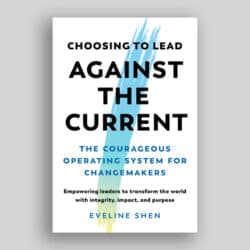The Collaboration Challenge: How Nonprofits and Businesses Succeed
Through Strategic Alliances
By James E. Austin, Harvard Business School
Published by Jossey-Bass
Connecting Companies to Communities:A Guide to the Design and Management of Community Investment Programs
Published by Canadian Centre for Philanthropy, Toronto
REVIEWED BY SHEHERAZADE HIRJI
Trillium Foundation, Toronto
Community Investment is rapidly evolving. Formerly regarded as something nice to do, it is now accepted as a critical tool for attracting and retaining customers and staff and creating value for a corporation that far exceeds what was previously achieved through a scattered approach to charitable giving.
For nonprofits, this is an additional opportunity and challenge. One of the perplexing issues is collaboration. How do nonprofits create real partnerships with business? How do they manage the potential power imbalance, the sometimes conflicting agendas and their different operating cultures? And once they strike such partnerships, how do they keep, nourish and expand them?
These two resources are welcome additions to the discussion on community investment and collaboration. There is some overlap in the content but in most respects they are as different as any two publications can be.
The Collaboration Challenge sets out to be a practical framework for understanding how traditional philanthropic relationships can be transformed into powerful strategic alliances. It does this by tracing and analyzing the steps involved in 15 collaborations between business and nonprofits. The general pattern is that the business and the nonprofit start with a small initiative and discover how much more they could do if they became strategically allied with each other. Due diligence about fit and the compatibility of values is then undertaken by both sides. The chemistry between the respective CEOs is critical, and often a deciding, factor. In a successful outcome the collaboration takes off in ways that create new value for each party
The case studies in this book are not about your average business and nonprofit: MCI WorldCom and The National Geographic Society; Reebok and Amnesty International; Starbucks and CARE. And they are generally safe causes. An executive from American Eagle Outfitters observes of their decision to work with Jumpstart, “nobody criticizes education and children. It’s not political”. It is, however, realistic in its analysis. The Starbucks/CARE partnership started when Starbucks was small. Starbucks grew enormously. It created its own foundation and launched its own initiatives and expanded its base of funding, making the CARE partnership much more vulnerable as a small part of a larger strategy.
The reader realizes that the length of the book can be attributed in part to a number of points being restated differently a number of times, which is unavoidable in this type of analytical literature. One refreshing, and very useable, part of the book is the “Collaborative Continuum”. This framework looks at various stages in such relationships: philanthropic, transactional, and integrative. At one end of the continuum, the degree to which the criteria (level of engagement, scope of activities, interaction level, etc.) are met is low. This suggests a philanthropic relationship, whereas successful collaborations need to be at the high (integrative) end to achieve a position of equal strength in the relationship. The seven “Cs” for collaborating successfully are also a helpful tool.
This publication will appeal to those who are inclined to learn from a somewhat academic perspective, although it is not a “how to” guide.
That is where the Connecting Companies to Communities handbook comes in. It is targeted specifically to businesses ready to move beyond a charitable impulse and into strategic community investment. It is a well-organized, practical and user-friendly guide for anyone planning to start a community investment program. It is also mostly Canadian in content, providing a broad overview of the community investment environment, including issues facing charities and nonprofit groups.
The handbook provides a step-by-step guide to building a program and covers all the critical aspects such as establishing a direction, getting management and employees on board, and developing partnerships. It also looks at community investment in a holistic way, incorporating cash and noncash contributions, as well as the role of employees and different ways of engaging them in the program. It leaves few stones untumed and really serves as a “must-have” for any business that either has a program underway or is considering starting a program. Appendices provide excellent resources, including sample policies and guidelines from the Canadian Pacific Charitable Foundation, Investors
Group, and other funders.
Examples of partnerships are drawn from a variety of large and small corporations, many of them winners of the IMAGINE “New Spirit of Community” Partnership Awards. Experienced community investment practitioners may find the depth somewhat lacking. For example, I was looking specifically for sample Human Resources policies that address time off for volunteer activities and did not find any. This is addressed to some degree by a list of additional reading and web sites that leaves the reader with plenty of ideas and resources to follow up in areas where more depth is needed.
The challenge of a resource like this is, of course, keeping the information current. Some of the references are already dated. Programs have changed and new partnerships between business and nonprofits are springing up all the time. Also missing are issues such as venture philanthropy that have more recently come into view.
Someone once said that when all is said and done, there is more to be said and done. Indeed there is. For now, these two resources, each in its own very different way, will bring readers generally up-to-date on collaboration and community investment.


